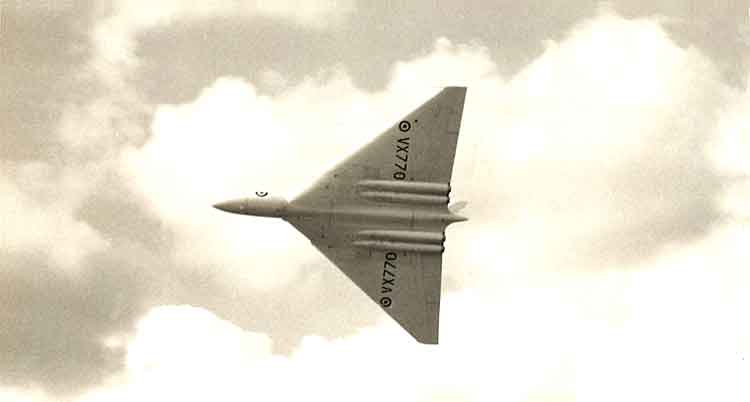
|
||
|
Mike visited Farnborough in Sep53 and took this shot of the Vulcan prototype. (Thanks to Mike Wraight.) Avro Vulcan The first bomber in the world to employ the delta-wing planform, the Avro Type 698 Vulcan prototype (VX770) flew for the first time on 30 August 1952. The first production Vulcan B.Mk.1 was delivered to No 230 operational Conversion Unit in July 1956, and No 83 Squadron becoming the first unit to equip with the new bomber in July 1957. By this time production of the greatly improved Vulcan B.Mk.2 was well under way. The Vulcan B.Mk.2 later received an avionics upgrade, including fitting of terrain-following radar, and was then designated B.Mk.2A. In 1969, the RAF's Vulcan force was assigned to NATO and CENTO in the free-fall bombing role. In May 1982, Vulcans were used to carry out attacks on the Falkland Islands in support of British operations to recapture the islands from Argentina. Total Vulccan production was 136 aircraft, including the two prototypes and 89 B.2s. The last operational Vulcans were six aircraft of No. 50 Squadron which had been converted to the flight refuelling role. The type was replaced by the Panavia Tornado fighter bomber, being finally phased out in 1984. Specifications apply to the Vulcan B.Mk.2: Crew: 5; Powerplant: four 9,072kg (20,000lb) thrust Bristol Siddeley Olympus Mk 301 turbojets. Performance: Max speed: 1,038km/h (645mph), range 7,403km (4,600miles); service ceuiling: 19,810m (65,000ft). Weight: 113,398kg (250,000lb) loaded. Dimensions: wingspan 33.83m (111ft), length: 30.45m (99ft 11in), height: 8.28m (27ft 2in). Armament: 21x453kg (1,000lb) HE bombs, Yellow Sun Mk.2 or WE.177B nuclear weapons; Blue Steel ASM with Red Snow nuclear warhead (Vulcan B.2BS). (Thanks to The Encyclopedia of Aircraft from Silverdale Books.) |
||